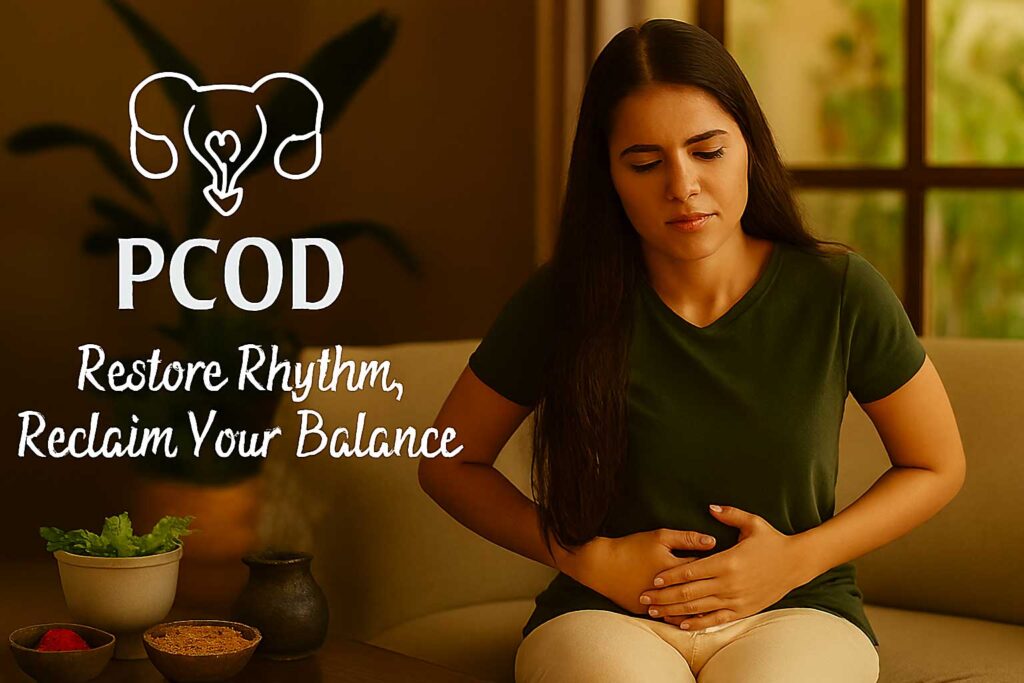PCOD
Ayurveda provides a gentle, all-encompassing approach to managing the symptoms of PCOD, a condition that is becoming more and more prevalent. The main cause of PCOD is thought to be an imbalance between the kapha and pitta doshas, which can interfere with hormone regulation and cause symptoms like weight gain, acne, and irregular cycles. Ayurvedic remedies for PCOD emphasize dietary changes, lifestyle adjustments, and the use of particular herbs that promote hormonal balance.
Herbs like ashwagandha, shatavari, and triphala are commonly used in Ayurvedic treatments for PCOD. Ashwagandha helps in reducing stress and balancing cortisol levels, while shatavari is known for its ability to promote hormonal health and reduce menstrual irregularities. Triphala, a mixture of three fruits, acts as a detoxifier, aiding digestion and supporting metabolic health.

Key Aspects of PCOD
Polycystic Ovarian Disease (PCOD) is a hormonal disorder in which the ovaries produce immature or partially mature eggs, leading to cyst formation. It often causes symptoms like irregular menstrual cycles, weight gain, acne, and can lead to issues with fertility and metabolism.
Treatment Plan
Each patient receives a tailored treatment plan, created after thorough consultations to meet their unique health needs.
Resilience & Skills
Experience Ayurvedic therapies in a serene and calming environment, with modern amenities for comfort while staying true to Ayurvedic authenticity.


FAQ's
According to Ayurveda, PCOD is a disorder that primarily affects the reproductive tissues (Artava Dhatu) and is caused by poor digestion (Agnimandya), which accumulates toxins (Ama), and causes hormonal imbalance.
Through individualized herbal medicine, diet plans, and detox therapies (Panchakarma), the emphasis is on balancing hormones, restoring metabolism, and eliminating accumulated toxins.
Indeed. In order to naturally address these fundamental issues, treatment specifically attempts to control weight by enhancing digestion and menstrual cycle regulation by promoting reproductive health.
Significant, long-lasting results usually require a dedicated treatment plan of 6 to 12 months for holistic correction, even though some improvements might be apparent in a few months.


